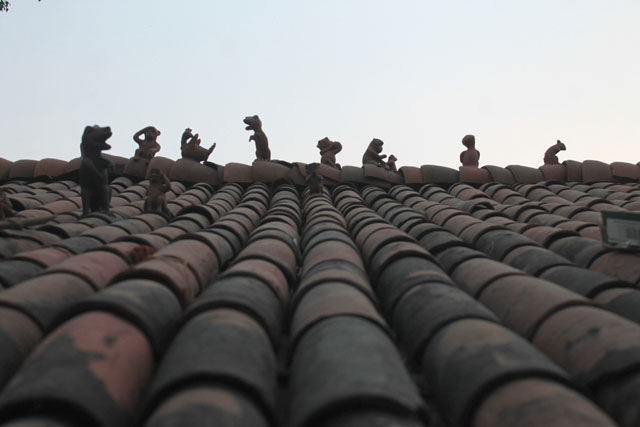His intricate designs make him one of the most prized craftsmen in Odisha. For the last 45 years, Manabodha Rana has time and again made his state proud, both at national and international levels. And although he is 60, Manabodha is in no mood to call it quits. It’s not only Manabodha, but also his entire family that takes pride in keeping alive the ancient and traditional art of terracotta.
Born to a family of potters in Bargarh district, Manabodha took to pottery when he was in Class VII. And since then he has pursued it with passion. Orissa POST spoke to Manabodha and his family on how they have been working to preserve this dying art form.
The potter community primarily makes clay earthen pots and other kitchenware and sells them in local markets. Manabodha’s father was an expert terracotta craftsman and the pride of his community. However, owing to lack of finances, he couldn’t support his son’s education. Manabodha was heartbroken but he decided to help his father and earn a few extra bucks for the family. Impressed by his son’s interest in terracotta art, Manabodha’s father decided to pass on the tricks of the trade to him. Manabodha was only 13 then.
Every day, Manabodha would go to the workshop, rotate the potter’s wheel and learn the finer aspects of the art from his father. Gradually, he started making earthen pots and diyas and became an expert craftsman like his father. Manabodha came into the limelight when he started making earthen toys for Saptapuri Amavasya. His little toy elephants, horses, cows, bullocks and worship items helped him take his art to the national level. Besides pots and pans, Manabodha’s creative experiments brought forth unique miniatures of crows, parrots, doves, and frogs on roof tiles.
“I tried to create something new and fortunately it attracted the attention of a director of handicrafts from Sambalpur who was visiting my village. He bought a few things and took them to Kolkata. Then the regional director there advised me to participate in Crafts Bazaar, a crafts fair held in Kolkata. Then I got the opportunity for live demonstration at a national-level crafts festival in Delhi’s Pragati Maidan. An advisor to Rajiv Gandhi, who was also the chairman of an all India festival, paid a visit to the festival and saw my work. Impressed, she recommended my name for a national award. In 1987, I was conferred with the National Award by the then President of India R Venkatraman,” says Manabodha.
Since 1981, Manabodha has been invited to various places for live demonstrations of his artistry. He visited the National Handicraft and Handloom Museum, Pragati Maidan, New Delhi to showcase his talent during the India International Trade Fair. He also participated in Dilli Haat and Surajkund Mela and visited the World Trade Center in Mumbai. Manabodha’s art has also been appreciated at the international level. The Government of India sent him to give live demonstrations in Osaka in Japan, Ottawa in Canada, Barcelona in Spain and Copenhagen in Denmark. Today, his products are regularly exported to Japan, Denmark, Spain and France by the Handicrafts and Handlooms Exports Corporation of India (HHEC). Manabodha was conferred with the Kalanidhi award at Surajkund, Haryana.
Manabodha’s children Bhismadeba and Jagyaseni have followed in their father’s footsteps and joined the family profession. Bhismadeba is now well recognised as a terracotta artist, much like his father.
“Normally we need three types of soil for work. We collect the iron-rich black soil from a pond called Nimisarannya Bandha near Barpali and mix it with red soil collected from agricultural land. The black and red soil are mixed in the proportion of 1:2 and soaked in water overnight. Small pebbles are then filtered out. Then we make a thick black dough and transfer it to the potter’s wheel, where it is given shape by able hands. Appliqué work is then executed on the pots. When these raw articles are completely dried indoors, they are put in the kiln. The furnace is ignited with straw, rice bran and cow dung. The dried articles are fired for six to 10 hours. Then, the artifacts are coloured with ochre red soil called geru (in Oriya) mixed with adhesive,” explains Bhismadev, who is leaving no stone unturned to carry his legacy forward.
“I also participate in different trade fairs and exhibitions in Odisha and outside. At times, the government organises designing and processing workshops. I also try to follow experts on social networking sites for new designs,” he adds.
Manabodha’s daughter Jagyaseni, a graduate, also helps her father and brother. She says, “My father is famous for terracotta in Odisha and outside. Earlier, I used to watch my father and grandfather make pots for daily use. But today there are several designs coming to the market and terracotta lovers demand demonstrations at home. You will notice artifacts being used in households, gardens and marriages. We work hard to meet market demand during wedding seasons. My father has taught me several designs and I too try to innovate. I love my family profession.”
RASHMI REKHA DAS, OP
